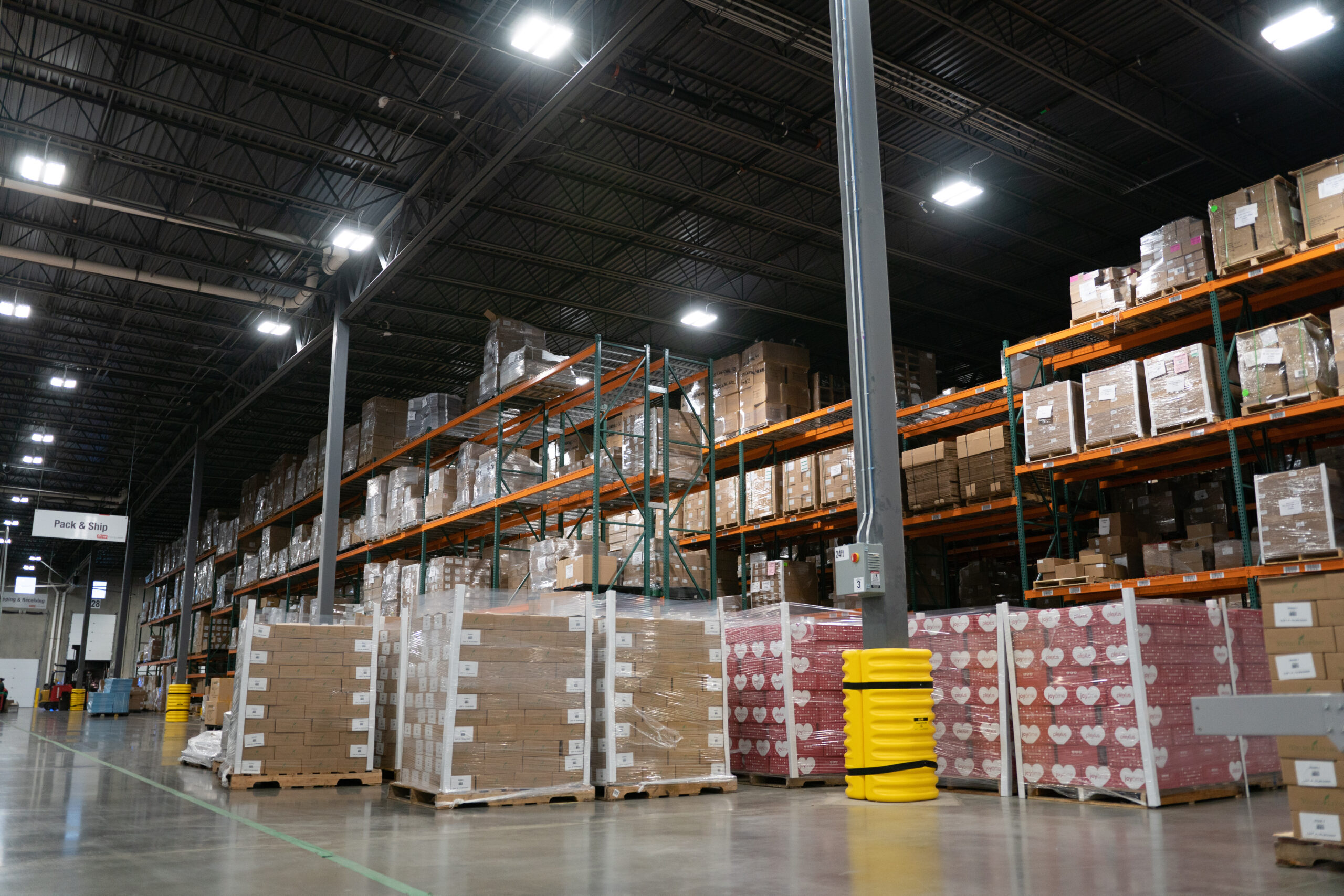When it comes to shipping goods between businesses, there are two main options for container loading: floor loading and pallet loading. While both methods have advantages and disadvantages, understanding the differences can help businesses make the best decision for their specific shipping needs.
Floor Loading
As the name suggests, floor loading involves loading goods directly onto the floor of the shipping container. This method is often used for goods that are too large or awkwardly shaped to fit onto a pallet. It is also commonly used for bulk goods, such as bags of grain or fertilizer.
One of the main advantages of floor loading is that it allows maximum use of space within the container. In addition, because the goods are loaded directly onto the floor, there is no wasted space between pallets or containers. This can be especially beneficial for businesses shipping large or irregularly shaped items.
Another advantage of floor loading is that it can be more cost-effective than pallet loading. Pallets can be expensive to purchase and maintain, and businesses that use floor loading can save money on these costs. Additionally, floor loading can be faster and easier than pallet loading, saving time and labor costs.
However, there are also some disadvantages to floor loading. One of the biggest challenges is that securing the goods in the container can be more difficult. Without the stability of a pallet, goods may shift during transport, which can damage the goods or cause safety concerns. As a result, businesses that use floor loading will need extra care to secure their goods for transport properly.
Another challenge with floor loading is that unloading the container at the destination can be more difficult. Goods loaded onto the floor may be difficult to access and require additional labor to remove from the container. This can result in longer unloading times and higher labor costs.
Another advantage of floor loading is that it can be more cost-effective than pallet loading. Pallets can be expensive to purchase and maintain, and businesses that use floor loading can save money on these costs. Additionally, floor loading can be faster and easier than pallet loading, saving time and labor costs.
However, there are also some disadvantages to floor loading. One of the biggest challenges is that securing the goods in the container can be more difficult. Without the stability of a pallet, goods may shift during transport, which can damage the goods or cause safety concerns. As a result, businesses that use floor loading will need extra care to secure their goods for transport properly.
Another challenge with floor loading is that unloading the container at the destination can be more difficult. Goods loaded onto the floor may be difficult to access and require additional labor to remove from the container. This can result in longer unloading times and higher labor costs.
Pallet Loading
Pallet loading involves loading goods onto pallets stacked and secured within the shipping container. This method is commonly used for smaller, more uniform goods, such as boxes of consumer goods or automotive parts.
One of the most significant advantages of pallet loading is that it provides a stable base for the goods. Pallets are designed to distribute weight evenly and provide a secure base for goods during transport. This can reduce the risk of damage during transportation and make unloading the container at the destination more accessible.
Pallet loading can also be more efficient than floor loading for businesses with a large volume of goods. Pallets can be loaded and unloaded quickly, saving time and labor costs. Additionally, because pallets are a standardized size, they can be easily stacked and loaded onto trucks or other vehicles.
However, there are also some disadvantages to pallet loading. One of the biggest challenges is that it can be less efficient for shipping larger or irregularly shaped goods. Pallets are designed to hold uniform goods, and irregularly shaped items may not fit properly on a pallet. This can result in wasted space within the container and higher shipping costs. Another challenge with pallet loading is that it can be more expensive than floor loading. Pallets can be costly to purchase and maintain, and businesses that use pallet loading must factor these costs into their shipping budgets. Additionally, because pallets are standardized, businesses may need to purchase additional pallets to ensure that they have enough to fill a container.
One of the most significant advantages of pallet loading is that it provides a stable base for the goods. Pallets are designed to distribute weight evenly and provide a secure base for goods during transport. This can reduce the risk of damage during transportation and make unloading the container at the destination more accessible.
Pallet loading can also be more efficient than floor loading for businesses with a large volume of goods. Pallets can be loaded and unloaded quickly, saving time and labor costs. Additionally, because pallets are a standardized size, they can be easily stacked and loaded onto trucks or other vehicles.
However, there are also some disadvantages to pallet loading. One of the biggest challenges is that it can be less efficient for shipping larger or irregularly shaped goods. Pallets are designed to hold uniform goods, and irregularly shaped items may not fit properly on a pallet. This can result in wasted space within the container and higher shipping costs. Another challenge with pallet loading is that it can be more expensive than floor loading. Pallets can be costly to purchase and maintain, and businesses that use pallet loading must factor these costs into their shipping budgets. Additionally, because pallets are standardized, businesses may need to purchase additional pallets to ensure that they have enough to fill a container.
Choosing the Right Method for Your Business
Businesses must consider several factors when deciding between floor and pallet loading. These may include the size and shape of the goods being shipped, the volume of goods being shipped, and the available budget for shipping costs.
For businesses shipping large or irregularly shaped goods, floor loading may be the best option. This method can maximize the use of space within the container and can be more cost-effective than pallet loading.
For businesses shipping large or irregularly shaped goods, floor loading may be the best option. This method can maximize the use of space within the container and can be more cost-effective than pallet loading.




